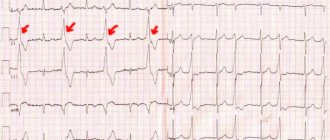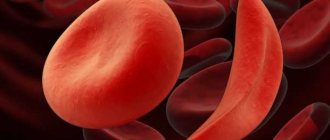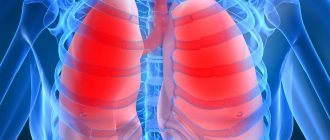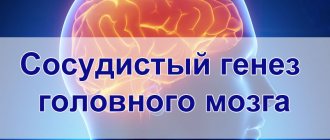Lack of oxygen is called hypoxia. The anomaly is formed for various reasons; as a result of ischemic processes in the cardiac tissues, destructive processes begin to develop, which can cause necrotic lesions of the myocardium, which can provoke death.
Cardiac hypoxia can be acute or chronic. It begins to develop when 80% oxygen or less reaches its tissues.
Myocardial hypoxia can have very serious consequences
The essence of the phenomenon and its forms
The pathological condition is classified according to the type of course. Accordingly, they talk about two varieties.
Acute
Acute myocardial hypoxia develops rapidly, in a matter of minutes. Leads to generalized cardiac dysfunction.
There are a lot of nonspecific symptoms: from shortness of breath to severe chest pain. Recovery is urgent, but often the ambulance doesn’t even have time to get there. Death occurs in 80-90% of cases within an hour from the onset of an acute attack.
The reasons are not so much the lethality of the process itself, but the need for urgent competent assistance, which few can provide.
If the patient is successfully saved, a sluggish type of pathological process develops. They require long-term treatment. The effect is unpredictable and depends on the individual characteristics of the patient and his medical history.
Chronic
Chronic hypoxia occurs most often. It accounts for up to 70% of all clinically recorded situations.
Relatively mild symptoms are noted in the early stages, then a period of serious deterioration begins, with increasing restrictions, first in physical activity, then in work activity, and finally the person reaches the point where no mechanical work is possible.
Not only is it impossible to work, but even taking care of yourself at home or getting out of bed becomes akin to a feat.
Treatment is effective only in the early stages. If the root cause cannot be eliminated, there is a chance to stop the manifestations, but not to cure the process completely. Symptomatic therapy allows you to slow down anatomical changes in the myocardium, but not radically eradicate them.
Regardless of the form, the lack of oxygen in the heart has a single essence: there is a metabolic disorder in the cardiac structures, and the function of cardiomyocytes decreases.
The result is a reflex narrowing (stenosis) of the coronary arteries, which are precisely responsible for adequate myocardial trophism. As a result of insufficient nutrition of muscles and active cells, the contractility of the organ decreases.
The result is heart failure, which leads to the death of cardiomyocytes, scarring of the affected areas and even greater dysfunction.
This is a cyclical process. If the vicious circle is not broken, the patient’s death is a matter of time, often insignificant.
What is the danger
The danger of hypoxia is the development of cardiac ischemia. Acute hypoxia threatens myocardial infarction and organ failure. Chronic lack of oxygen leads to the replacement of myocardial cells with connective tissue and the development of cardiosclerosis.
Hypoxia of cardiac tissue does not occur in isolation. A decrease in the contractile activity of the muscle fibers of the heart leads to a deficiency of oxygen in the bloodstream, the development of anemia, ischemia of the kidneys, brain and other organs of the body. Without treatment, hypoxia leads to a gradual decrease in quality of life and the development of heart failure.
Causes of acute form
Factors in the development of oxygen starvation of the heart muscle are almost always emergency conditions.
A sample list is:
- Coronary insufficiency and subsequent heart attack. The essence of the process is a significant disruption of the nutrition of the heart muscle, the death of cardiomyocytes occurs, and of an avalanche-like nature.
The larger the area of necrosis, the higher the likelihood of fatal hypoxia. The correction is carried out on an emergency basis, but the effect is more than controversial.
The mortality rate of the condition when more than 30% of the muscle layer is affected is almost 60%. The main causes of death are impaired oxygen metabolism and myocardial contractility.
- Pulmonary embolism, if a blood clot blocks the lumen of the vessel by more than 70%. Patients who smoke and drink for a long time especially often suffer from this problem. Also persons with an excessive amount of hemoglobin, impaired rheological properties of liquid connective tissue.
Specific therapy is required at the stage of identifying the problem. Once thromboembolism occurs, especially with significant blockage of the artery, the chances of survival are minimal.
The patient loses consciousness within seconds. Death occurs within 5-15 minutes. Resuscitation measures are not of great importance.
- Drowning. As a result of liquid entering the respiratory tract, gas exchange is blocked. The cause of death among patients in water is hypoxia of the myocardium and brain structures. That’s why it’s difficult to save people after drowning, especially long-term ones.
- Carbon monoxide poisoning. As a result of the penetration of wood, plastic, and other substances into the respiratory tract. If oxygen is supplied in a timely manner, there is a chance of saving a person.
- Aspiration. Entry of foreign bodies and liquids into the trachea and bronchi. Leads to an increase in the amount of carbon dioxide in the bloodstream. Adequate gas exchange is disrupted, hypoxia of the myocardium and brain is detected. Death occurs in a matter of minutes if first aid is not provided.
- Acute pneumonia, especially bilateral. Without treatment it ends fatally.
These factors are difficult to correct. That is why they talk about such a high mortality rate of the acute form of the disease process.
Causes of chronic hypoxia
Possible points include:
Atherosclerosis
Atherosclerotic plaques are the main cause of both hypoxia and other processes that cause a chronic form of oxygen deficiency in the heart.
There are two types - blockage of arteries, including coronary cholesterol plaque. Lipid deposits form in patients with metabolic disorders. Outwardly manifests itself as obesity.
Excess body weight is a consequence, but not a cause. A healthy body can even cope with excess cholesterol structures coming from food. Doctors take this into account.
The second option is stenosis. Narrowing of the arteries. As a result of smoking or drinking alcohol.
Low concentration of oxygen in the air
Not in the same quantity as at the time of the fire. During complete calm in the stuffy season (summer months) or when the usual climate changes, the heart may not withstand such an overload.
The process of getting used to new conditions is long. If you have cardiological diseases, it is recommended to consult with a leading specialist in advance before a business trip, vacation or other travel to hot regions.
Anemia
Chronic lack of hemoglobin in the bloodstream. The reasons are multiple, mainly nutritional (related to nutrition). Prolonged but small bleeding is possible.
Factors associated with the loss of liquid connective tissue are especially common in bottle-fed children or in women with irregular menstrual cycles.
Treatment is carried out urgently. Anemia itself is not dangerous, but the complications that accompany it pose a threat.
The course of therapy is determined by the type of disorder. Usually we are talking about iron deficiency form. The introduction of drugs based on this element turns out to be the main method of supervision. Duration - several weeks, maximum 2 months.
Continuous dynamic monitoring of the patient's condition is indicated. All deviations require hospitalization.
Angina pectoris
A type of acute coronary insufficiency. There are several forms of this process.
Some types develop against a background of complete rest, often at night, during rest (vasospastic angina).
Others are associated with intense physical activity and manifest themselves after stress or excessive activity (angina pectoris).
The causes are multiple and are determined during diagnostic measures. The essence of the pathology is a malnutrition of cardiomyocytes as a result of arterial stenosis, which leads to oxygen starvation of myocardial tissue.
The process is similar to a heart attack, but is less aggressive and does not reach the very point where avalanche-like necrosis begins. But this is a wake-up call and the first step towards an emergency.
Treatment is urgent, under the supervision of a specialized specialist, with the use of angioplatelet agents and antihypertensives as necessary. Surgery is a last resort and is prescribed strictly according to indications. If there are no other treatment options.
Risk factors include: diabetes mellitus and other endocrine diseases, disorders of the central nervous system, consumption of tobacco products and alcoholic beverages.
In most cases, myocardial oxygen starvation is found in male patients over 40 years of age. Young people suffer less often. Localization is the left ventricle, but there are exceptions.
Why does it happen?
The following reasons contribute to the development of hypoxia:
- Long stay in a stuffy room or at altitude in the mountains. In this case, a person breathes air that has a low oxygen content.
- Hemolysis of red blood cells or anemia. Blood oxygen saturation worsens due to a decrease in the ability of hemoglobin to attach oxygen molecules.
- Poisoning with toxic substances, heavy metals, carbon monoxide. In this case, body tissues lose their ability to absorb oxygen.
- Inactive lifestyle.
- Myocardial infarction, diabetes mellitus, vasculitis, cardiac pathophysiology. These diseases aggravate blood circulation or completely block it, which occurs due to damage to blood vessels.
- High physical activity.
- Bad habits.
It is possible that a combination of several factors can cause the disease.
Clinical picture of acute hypoxia
Acute disorder manifests itself most actively, although the signs are nonspecific:
- Intense pain in the chest. Its cardiac character is indicated by burning, pressure, and distension. The pain radiates to the left arm, shoulder blade, but when changing body position it remains the same. Against the background of physical activity, it increases significantly. Nitroglycerin gives a partial effect.
Attention:
A painful episode lasting more than 30 minutes is a direct indication of a heart attack.
- Shortness of breath at rest. The patient cannot take in air. Loads, even minimal ones, such as moving from the room to the kitchen, lead to a significant aggravation of the symptom, and loss of consciousness from cerebral hypoxia is possible.
- Weakness, drowsiness, decreased ability to work almost to zero.
- Apathy or, on the contrary, psychomotor agitation.
- Feeling of intense fear, panic attack.
- Paleness of the skin throughout the body. Also mucous membranes.
- Cyanosis of the nasolabial triangle. Blue discoloration of the area around the mouth.
- Loss of consciousness. Repeated fainting over a short period of time is possible.
- Dizziness, nausea. Extremely rarely - vomiting.
In many cases, the duration of manifestations is minimal. A syncope (fainting) condition interrupts the clinical course and indicates a severe lack of oxygen in the blood and cerebral ischemia.
Signs of oxygen starvation
The most difficult thing to diagnose oxygen starvation is to define it. Symptoms are often too vague. One of the typical signs of oxygen starvation is a sharp excitation of the nervous system up to a state of euphoria, followed by sharp depression and apathy. During excitement, voluntary movements of the body are observed (restlessness for no reason, twitching of the collar, etc.), disruption of the normal rhythm of the heart and breathing (visible on the cardiogram - frequent and uneven heart contractions are observed). When the excitement suddenly passes, the skin becomes too pale, cold sweat appears on the forehead, and “flickers” appear before the eyes.
The body is trying to “escape”:
- paralysis of a muscle group develops by increasing their tone;
- various protective reflexes appear and disappear;
- the body “turns off” some functions, which causes loss of consciousness.
Attention! With fulminant hypoxia, coma can occur 1–2 minutes after loss of consciousness.
In the first 15 seconds, brain activity stops and the person falls into a coma.
With myocardial hypoxia, increased heart rate is observed; with inactivity, it can also completely stop, which will lead to a lack of oxygen in the brain.
It is important to remember that the faster first aid is provided, the fewer consequences for the body.
Quite typical symptoms of hypoxia are also:
- headache;
- hysterical state (when you want to laugh and cry at the same time);
- memory impairment and disorientation;
- aggressiveness and deterioration of mental activity;
- disturbance of sleep, vision, speech.
Symptoms of the chronic form
Chronic hypoxia of the heart gives less pronounced symptoms from the cardiac structures, central nervous system, and breathing:
- Chest pain of moderate intensity. Pressing, burning. They occur in fits and starts. Can be easily removed with Nitroglycerin. The duration of one episode is 10-30 minutes, no more.
- Dyspnea. Unlike the acute process, it is not very pronounced. But noticeable.
- Dizziness.
- Cephalgia (headache). The pain is localized in the occipital region and temples. Also crown. By nature - pressing or squeezing.
- Fall in blood pressure. Growth possible. The tonometer level is unstable.
- Tachycardia. Acceleration of cardiac activity. Heart rate can reach 120-150 beats per minute.
- Syncope. They are relatively rare.
- Pale skin, blue corners of the mouth.
- Excessive sweating (hyperhidrosis) even at rest.
- Feeling of coldness in hands and fingers.
Possible other violations. Signs of chronic myocardial hypoxia resemble the clinical picture of coronary insufficiency. It most often accompanies a violation of the trophism of the heart muscle.
5Myocardial hypoxia in children
Not only adult patients, but children and adolescents are susceptible to hypoxia of the heart muscle. The causes of this condition in children can be cardiac and non-cardiac diseases.
Heart diseases: myocarditis, cardiomyopathy.
Non-cardiac diseases: increased thyroid function, chronic tonsillitis, hypothyroidism, electrolyte metabolism disorders, physical stress.
Clinical complaints may be absent. Some patients may complain of fatigue, “interruptions” in heart function, and shortness of breath.
The most informative diagnostic method for this condition in children is the ECG method. Ultrasound examination of the heart, as a rule, does not reveal deviations from the age norm.
Treatment of myocardial hypoxia in children is based on treatment of the underlying disease that caused such pathological changes. Treatment of the underlying disease also includes drugs that support metabolic processes in the myocardium at the proper level.
These include folic acid, vitamins B and C, potassium and magnesium supplements. Retabolil, potassium orotate, Riboxin, etc. are also prescribed.
Diagnostics
It takes place on an outpatient basis, and in acute cases - in a hospital. A thorough assessment of the patient's condition is required, and action must be taken quickly. Every minute counts.
Severe patients are examined to a minimum: blood pressure, heart rate are measured, and sounds in the chest are listened to.
Then, as part of resuscitation, vital signs are restored. Only if successful, a long-term diagnosis is prescribed.
List of events:
- Oral questioning of the patient. How long have the complaints appeared, and how much do they interfere with everyday life and activities?
- Anamnesis collection. Family history, past and current illnesses, other points.
- Measurement of blood pressure and heart rate. Both levels are rejected. In which direction depends on the type and stage of the pathological process.
- Daily Holter monitoring, with registration of heart rate and blood pressure for 24 hours.
- Electrocardiography. Determines functional disorders in the activity of the heart. Detects arrhythmias and other similar phenomena. There are no specific signs, but an experienced specialist identifies the problem quite quickly.
- Echocardiography. Assessment of the anatomical state of the muscle layer, aorta and coronary arteries. Gives different information on the state of things. Against the background of prolonged hypoxia, thickening of the walls, cardiomyopathy itself, is detected.
- MRI. As needed. Standard tomography assesses the condition in a static manner and does not provide information about the dynamics. Therefore, a study is prescribed as part of screening for anatomical defects.
- General blood test, biochemical and for hormones of the thyroid gland, pituitary gland, adrenal glands.
It is possible to assess the neurological status.
Treating the root cause
| Process | Method of therapy |
| Atherosclerosis of the aorta, coronary arteries. | Prescription of statins: Atoris as the main drug. In case of calcification, deposition of mineral salts in the structure of the cholesterol plaque, surgical intervention to excise the formation is indicated. |
| Thromboembolism. | If the blockage is more than 70%, there is no point in helping. Fatal outcome is likely. In other situations, the use of antiplatelet agents and thrombolytics is indicated: Aspirin, Heparin. Surgical treatment is possible, if indicated. The same medications are taken during the rehabilitation period as a preventive measure. |
| Heart attack. | Therapy with pharmaceuticals: antihypertensives, cardioprotectors and others. The goal is to restore normal blood circulation in the heart muscle, and through it throughout the body. The hemodynamic variants of the pathology are different, therefore the dosages and combinations are not the same. |
| Angina pectoris. | Antiarrhythmics, protective drugs, antihypertensives. Depends on the clinical situation. Stenting, ballooning - mechanical, forced expansion of blood vessels by surgical means. |
| Heart defects, both congenital and acquired: stenosis of the mitral, tricuspid, aortic valve. | Prosthetics, plastic surgery, if possible. |
| Carbon monoxide poisoning. | Oxygen supply, connection to an artificial respiration apparatus. |
Prevention
Undoubtedly, it is more correct and logical to try to prevent any disease. It is for this purpose that all people, without exception, reaching the age of forty, are recommended to think about preventing the development of cardiovascular diseases and hypoxia, first of all.
To prevent the problems under consideration, it is important:
- regularly spend time outdoors, in nature, it is advisable to go to the mountains, to the sea, to the forest at least twice a year;
- adjust your lifestyle - give up bad habits, get enough physical activity;
- eat right, not allowing your blood vessels to become clogged with cholesterol plaques;
- use preventative traditional medicine to help your body.
In conclusion, it is important to note that peace of mind, regularity in everything, and emotional balance are no less important for a person.
After all, it is emotional overload that can also provoke spasm of the vascular bed, which can lead to hypoxia. Avoid stress, lead a healthy lifestyle and be healthy!
dlyaserdca.ru
Eliminating symptoms
Symptomatic therapy is aimed, on the one hand, at relieving symptoms, and on the other, at preventing further progression of the pathology.
Approximate list of medications:
- Beta blockers, calcium antagonists, centrally acting agents and ACE inhibitors. Reduce blood pressure and normalize heart rate.
- Antiarrhythmic. Quinidine. Stabilizes heart rate.
- Cardioprotectors. Mildronate. Improves metabolism at the local level.
Myocardial hypoxia imposes serious restrictions on future life: giving up smoking, alcohol, and excessive physical activity. A diet low in fat and quickly digestible carbohydrates - treatment table No. 10.
Forecast
Depends on the reason. The lethality of the acute form is close to 90%. The chronic type is more complicated in this regard. Many factors are taken into account: age, weight, gender, general health, family history, addictions, response to medication, moment of detection of pathology, and others.
In general, the prognosis is favorable with early diagnosis of the deviation. Survival rate is 80% or higher for at least 7-10 years.
Attention:
The addition of heart failure, severe coronary artery disease, or a previous heart attack reduces the likelihood of a favorable outcome by almost half, sometimes more.
Possible complications
Main consequences:
- Cardiogenic shock. A critical drop in myocardial contractility and blood pressure. Death is the most likely scenario. It is observed in almost 100% of situations.
- Heart attack. Myocyte necrosis.
- Heart failure. Sudden, with no prospects for recovery.
- Stroke. Death of nerve tissue. As a rule, we are talking about the ischemic variety. Even with good treatment and survival, some neurological deficits are noted. It manifests itself as speech, vision, hearing impairment, paralysis and paresis.
- Pulmonary edema.
- Brain damage.
Complications develop against the background of a long-term untreated or acute course of the pathological process.











